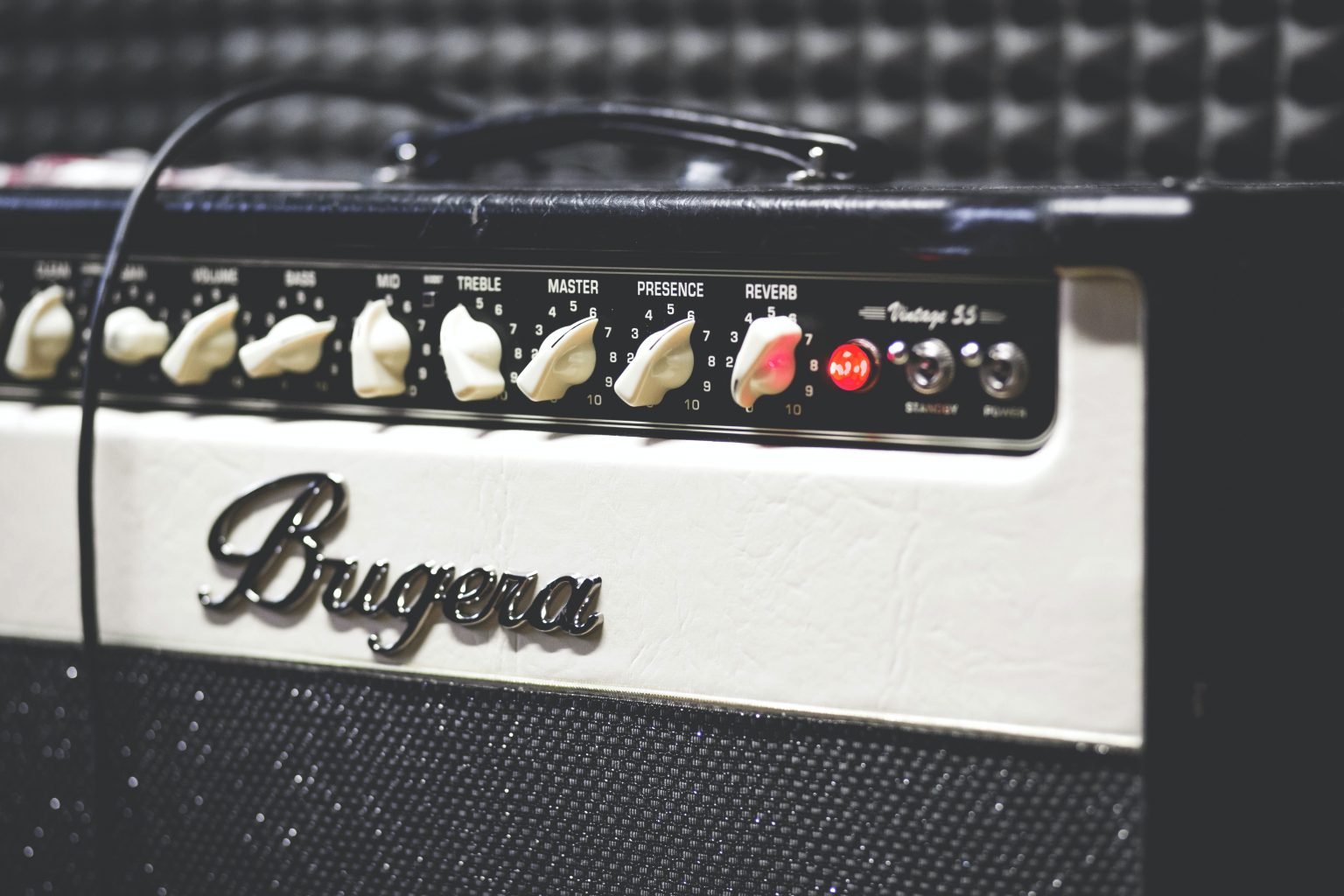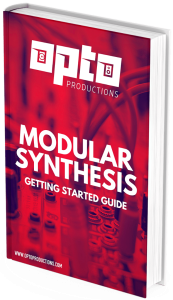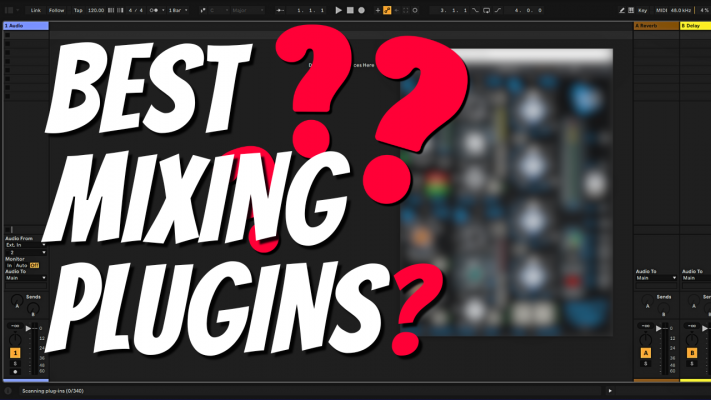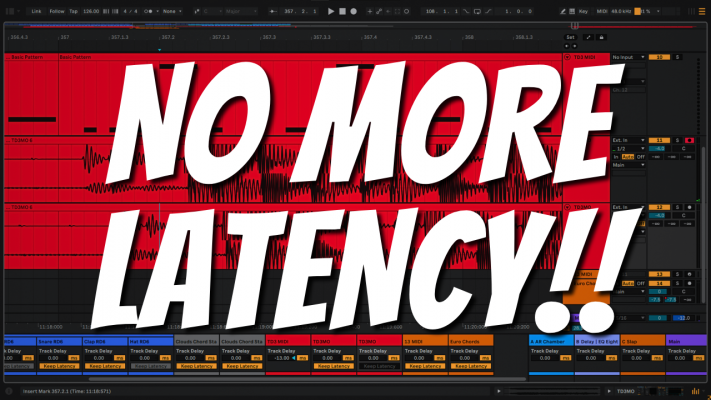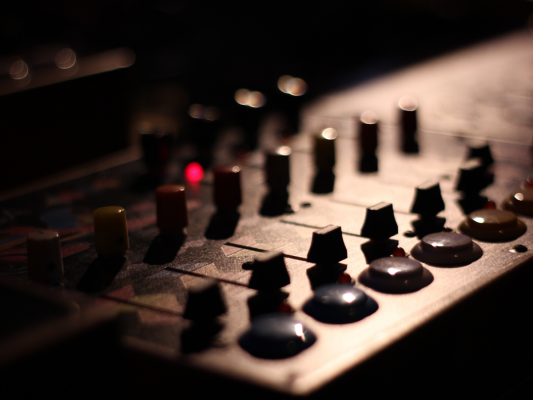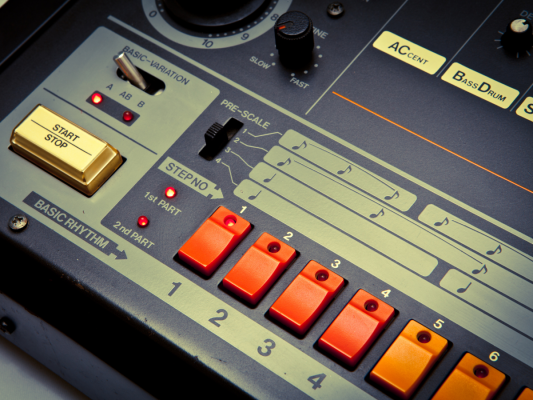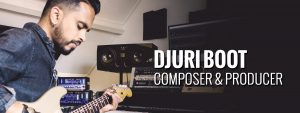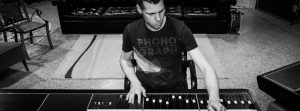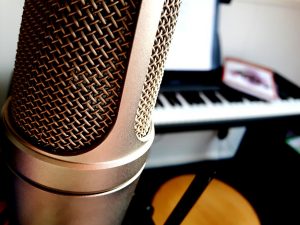In part 14 of this series about music production basics, we’ve introduced distortion & saturation effects. If you ever listened to rock or metal music you know that distortion is used on guitars all the time. But did you know that distortion is used in almost all types of music? Especially modern genres like EDM use a hell of a lot of it to get that ‘in your face’ kind of sound. Let’s talk about the benefits of mixing with distortion and why you might want to use it.
Analog distortion
When you record instruments in a studio, like drums, guitar, bass, piano, or vocals, the sounds those instruments produce are picked up by a microphone. The microphone signal is amplified by a microphone pre-amplifier. Then the signal might pass through some outboard gear like a mixer, equalizer, or compressor. After that, the signal enters an analog to digital converter (ADC) before it is finally recorded as 1’s and 0’s on your hard drive.
All these stages introduce distortion. We’ve learned in part 14 that a sound that is altered in any way, is distorted. Because the acoustical waves are transferred through a long chain of devices, distortion is inevitable. Vintage microphones and pre-amps introduce saturation and noise, but even brand new designs introduce some form of saturation as well.
If it sounds good it is good
So when you compare recorded music to music that’s made completely in the box (in the computer), like EDM, the latter is incredibly clean. But why do you want to introduce distortion to a perfectly fine digital signal? Because it sounds good! Any engineer who doesn’t work in audio might think you’re crazy but making music is all about feelings, not about technical purity.
Not all kinds of distortion sound good though. The ones we use for mixing is usually harmonic distortion. This type of distortion produces harmonic overtones that sound pleasant to our ears because they adhere to certain ratios that are also found in many musical instruments. Visit this link to learn more about harmonic distortion along with 8 creative tips for using distortion.
How do I use distortion in my mix?
All right, so what type of distortion do I use in my mix then? Well, that depends on what sound you’re looking for. Are you going for an aggressive ‘in your face’ sound? Or are you looking to give some warm, analog, flavor to your sounds? Many plugins emulate analog gear which all add some sort of distortion. Tape saturation is known for its pleasant sound and is often used to tame transients (peaks) a bit. This works great on drums or even as a master plugin.
Warming up the mix
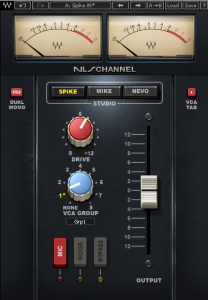
Emulations of analog EQs and compressors introduce distortion in a subtle way, but when used on multiple tracks, can warm up your mix a great deal. Plugins that emulate analog summing, like NLS from Waves are great to add some randomness to your tracks. Because digital is perfect and analog is not, any analog mixer will add subtle variations in tone and balance on every track. Analog mixers have crosstalk which means that one channel may bleed a little bit of signal into another channel, so you might hear a little bit of kick drum on the snare channel and vice versa. Summing helps to blend all instruments in your mix together more easily.
Adding some digital bite.
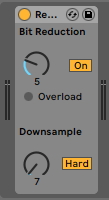
While most analog emulations are used to warm up a track. Digital distortion is useful when you want to add brightness or high-end detail. Bit reduction is useful to add some raw artefacts to drums, bass, and synth parts. Bit reduction can be tuned to produce additional frequencies (harmonics) that are not directly related to the root note (inharmonic distortion). It can sound very harsh when overdone but may add some rawness when used sparingly.
Modern distortion plugins like Izotope Trash 2 can add lots of high end to a track. Because distortion adds frequencies on top of the original sound, when you use a dense distortion, you create new frequencies. You can’t boost frequencies with EQ if there is nothing to boost. But because distortion adds extra frequency content you can create more high-end. This is useful if you have a dull sounding instrument like a Wurlitzer or Fender Rhodes, or actually any bass instrument that lacks high-end.
Keep in mind that because distortion adds frequency content, your sound will also increase in loudness. That’s why most distortion plugins provide an output gain control. So when you boost a sound with distortion, decrease the output level to compensate for this level increase.
Shaping the sound
Some distortion effects allow you to shape the sound with filters and equalizers. This is useful if you want to boost high-frequencies but want to keep the low-frequencies in check. A lot of low-frequency distortion can muddy up your mix pretty quickly. Some distortion effects have a multi-band option. This means that you can apply different amounts of distortion separately to multiple frequency ranges like low, mid, and high.
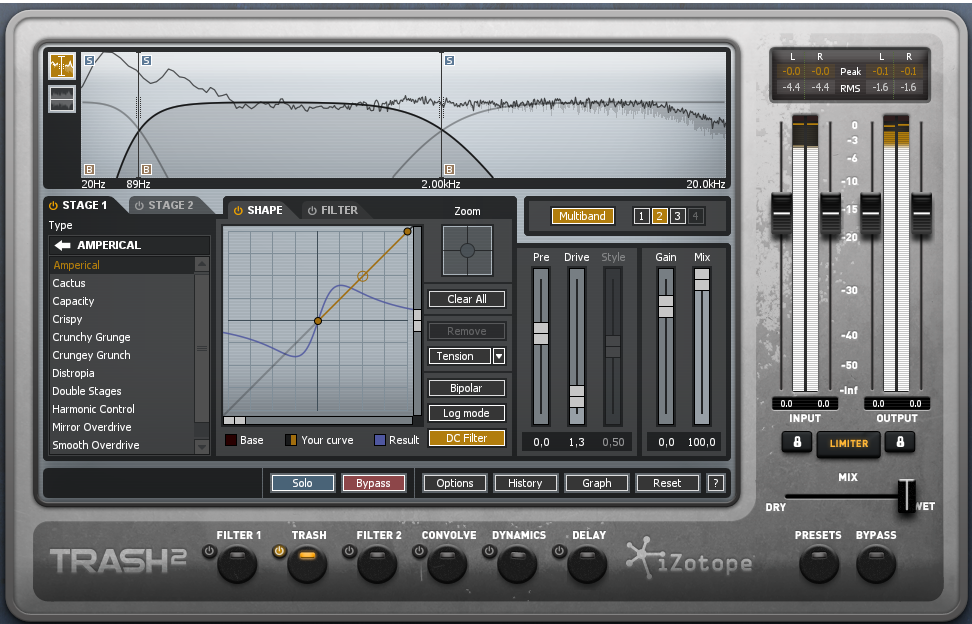
Where to use distortion?
I often use distortion on group tracks. I send all drums to one group or buss and then use some saturation or overdrive type of distortion on there. This helps to glue all drums together and adds some punch and high-end clarity at the same time. Parallel distortion is another trick I like to use, which can be easily done when the plugin provides a mix control so you can blend the amount of distortion in with the dry sound however you like.
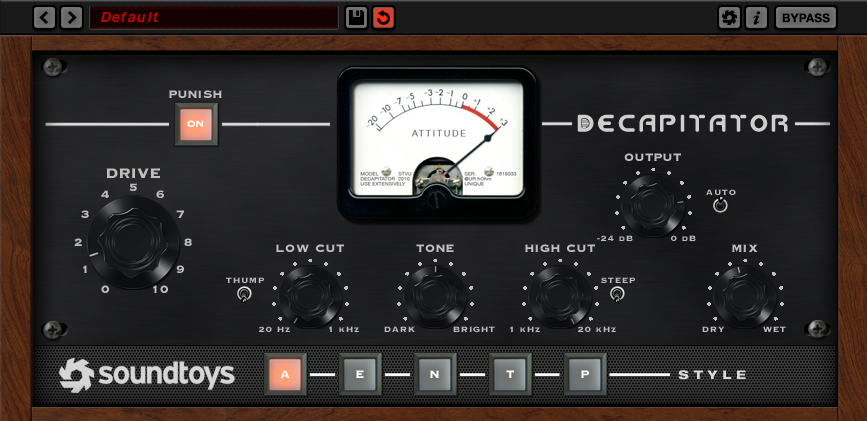
Distortion on Lead sounds can really make it cut through the mix. Remember that distortion affects every effect that precedes it. So if you use a reverb plugin before you insert a distortion effect, you can really blow up that reverb to create enormous sounds.
Be careful though.
One note of caution, however. Just because distortion makes everything sound huge, there is a limit to how much distortion you can add to a track. Because everything in music is about contrast, if you apply distortion to every possible sound, you have no clean tracks to reference to anymore. Just like if you put a reverb on every sound in your mix, everything will sound far away because there is no contrast between dry and upfront and wet and to the back. So find a way to balance the way you use distortion, balancing is what mixing is all about.
Distortion is another effect that you should try out for yourself. See what works best for your music and don’t be afraid to experiment.

